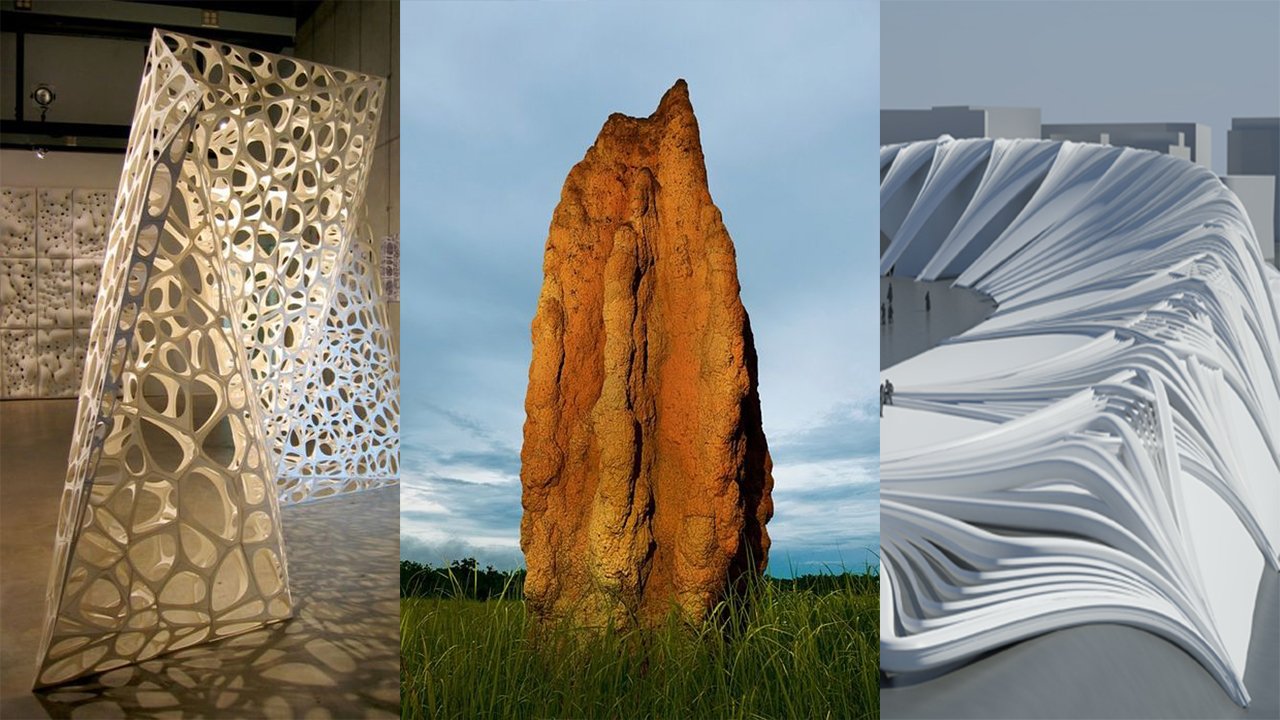Biomimicry in architecture: Learning from nature
Biomimicry in architecture involves studying nature’s strategies, systems, and patterns to inform innovative building design and construction practices. Here’s a deep dive into how architects are harnessing nature’s wisdom to inspire sustainable and eco-friendly architecture.
1. Bio-Inspired Design Principles
Natural Forms and Structures:
- Morphological Adaptations: Emulating shapes, patterns, and structures found in nature, such as shells, leaves, and honeycombs, to optimize strength and efficiency.
- Fractal Geometry: Applying fractal patterns to building facades and structural elements for enhanced resilience and aesthetic appeal.
2. Climate Adaptation and Resilience
Thermal Regulation:
- Termite Mounds: Studying termite mound ventilation systems to develop passive cooling strategies and optimize indoor climate control.
- Water Management: Mimicking plant transpiration and water capture mechanisms for efficient rainwater harvesting and irrigation systems.
3. Sustainable Materials and Construction Techniques
Bio-Inspired Materials:
- Self-Healing Concrete: Developing concrete mixes that mimic the self-repair capabilities of natural materials like bones and shells to extend structural lifespan.
- Biodegradable Composites: Using bio-based materials and biopolymers for lightweight, durable building components that reduce environmental impact.

4. Adaptive Facades and Energy Efficiency
Responsive Envelopes:
- Smart Skins: Designing building facades with responsive materials that adjust opacity, reflectivity, and insulation properties based on environmental conditions.
- Phototropism: Incorporating light-responsive materials inspired by plant movements to optimize daylighting and reduce artificial lighting needs.
5. Ecological Urban Planning and Landscape Integration
Biodiversity and Habitat Preservation:
- Green Roofs and Vertical Gardens: Installing vegetated roofs and walls to enhance biodiversity, improve air quality, and mitigate urban heat island effects.
- Urban Ecosystems: Creating integrated landscapes that mimic natural habitats to support local flora and fauna within urban environments.
6. Innovation through Collaboration and Interdisciplinary Research
Cross-Disciplinary Insights:
- Biological Sciences: Collaborating with biologists, ecologists, and biomaterial experts to translate biological principles into architectural innovations.
- Research Partnerships: Engaging with universities and research institutions to explore new biomimetic technologies and prototype sustainable building solutions.
7. Educational Outreach and Public Awareness
Biomimicry Education:
- Curriculum Integration: Introducing biomimicry concepts into architectural education to inspire future architects and designers.
- Public Engagement: Hosting exhibitions, workshops, and community events to raise awareness about biomimetic design and its potential for sustainable urban development.
8. Ethical Considerations and Long-Term Impact
Ethical Design Practices:
- Environmental Ethics: Adhering to principles of environmental stewardship and minimizing ecological footprint through biomimetic design solutions.
- Social Responsibility: Addressing community needs and promoting inclusive, resilient architecture that enhances quality of life for all inhabitants.
9. Future Trends and Technological Advancements
Advancing Biomimetic Technologies:
- Nanotechnology Applications: Exploring nanoscale materials and coatings inspired by natural structures for enhanced durability and performance.
- Artificial Intelligence: Integrating AI-driven algorithms to simulate and optimize biomimetic design processes for greater efficiency and precision.
10. Case Studies and Real-World Applications
Success Stories:
- Eastgate Centre, Zimbabwe: Applying termite mound principles for natural ventilation and energy efficiency in commercial architecture.
- Eden Project, UK: Creating biomes inspired by natural ecosystems to showcase biodiversity and sustainable building practices on a large scale.
Conclusion
Biomimicry in architecture offers a transformative approach to sustainable design, drawing inspiration from billions of years of natural evolution. By emulating nature’s strategies and integrating ecological principles into building design, architects can create resilient, energy-efficient structures that harmonize with the environment and contribute to a sustainable future. As biomimetic technologies continue to evolve, their application in architecture promises to unlock new possibilities for innovation, resilience, and environmental stewardship in urban development and beyond.



